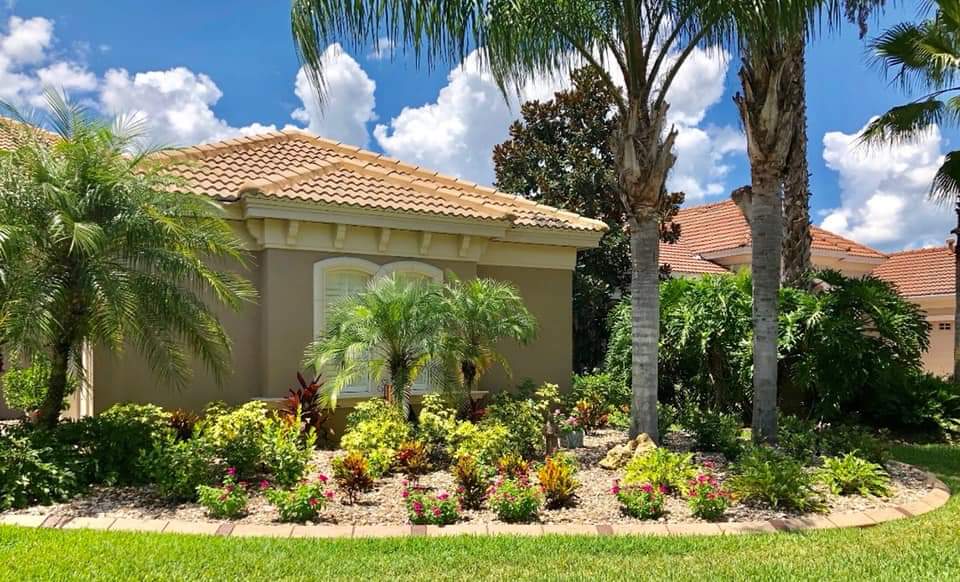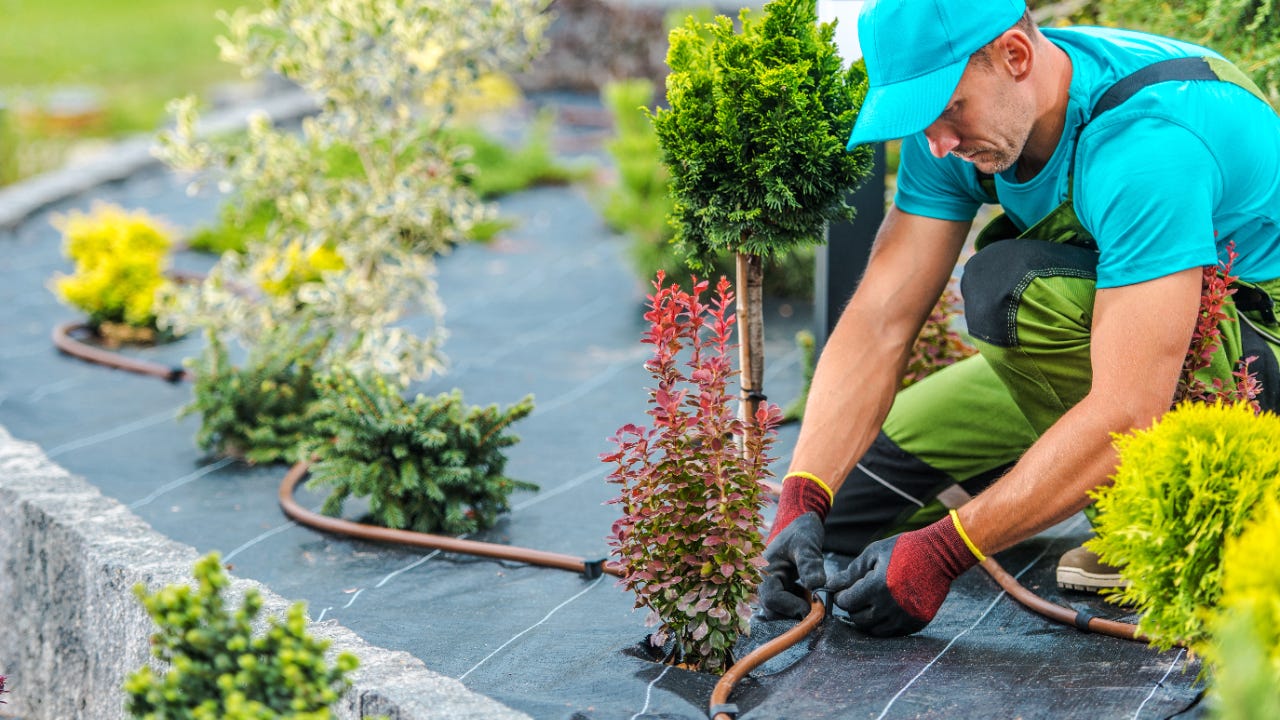A Comprehensive Overview to Designing and Implementing Effective Landscaping Solutions
The art and science of landscape design prolong beyond plain looks; they include a thoughtful integration of layout principles, ecological stewardship, and sensible application. What strategies can one employ to ensure these landscapes not only flourish however also flourish in consistency with their surroundings?

Recognizing Landscape Style Principles
One could question what foundational elements add to efficient landscape design. At its core, effective landscape style rests on numerous crucial principles that lead the plan and selection of components within an area. These principles consist of unity, rhythm, equilibrium, and percentage, each offering to develop a harmonious exterior atmosphere.
Unity refers to the cohesive connection amongst different elements, making certain that they work together visually and functionally. Equilibrium can be achieved through in proportion or asymmetrical plans, permitting the landscape to really feel secure and welcoming. Proportion involves recognizing the scale of elements in relationship to each various other and the surrounding environment, advertising aesthetic harmony and convenience.

Evaluating Your Outdoor Room
Before executing the concepts of landscape design, a complete analysis of your outdoor area is essential. This initial assessment assists specify the extent of your landscaping job and makes sure that your layout aligns with the distinct attributes of your property. Begin by evaluating the dimensions of your area, taking exact dimensions to recognize the available area for various elements such as outdoor patios, pathways, and gardens.
Next, observe the existing features of your landscape, including topography, soil high quality, and drain patterns. These aspects dramatically affect plant option and positioning. In addition, analyze the sunshine exposure throughout various locations throughout the day, as this will impact the sorts of plants that flourish in your garden.
Consider the microclimates developed by frameworks, trees, and various other challenges, as they can impact temperature and moisture levels. Lastly, remember of any type of existing plants or hardscape aspects that you want to keep or remove. This detailed examination prepares for a efficient and knowledgeable landscape design service, guaranteeing that your design is not only visually pleasing yet sustainable and additionally practical for several years ahead.
Sustainable Landscaping Strategies
Incorporating lasting landscaping strategies is necessary for creating an eco responsible exterior area. These techniques not only advertise ecological equilibrium but likewise boost the functional and visual worth of a landscape. One foundational strategy is the utilization of native plants, which call for less water and upkeep while sustaining regional wild animals. Executing reliable watering systems, such as drip irrigation, decreases water waste and guarantees that plants receive ample moisture.

Another efficient strategy is the tactical positioning of bushes and trees to provide natural windbreaks and color, thus reducing energy expenses (Palm Desert Landscaping). Rainfall gardens can be incorporated into the landscape style to take care of stormwater overflow properly, filtering contaminants prior to they enter waterways
Choosing the Right Plants
Picking the right plants for your landscape is important to attaining both aesthetic appeal and environmental consistency. The process begins with an understanding of your local environment, soil conditions, and the certain microenvironments within your landscape. Assessing elements such as sunshine direct exposure, wetness levels, and existing plants will assist you choose plants that thrive in your distinct setting.
Think about including indigenous plants, as they are well-adapted to local conditions, need much less upkeep, and support local wildlife. Additionally, selecting a diverse array of species can enhance biodiversity while decreasing the risk of disease and pest outbreaks. It is vital to examine the development practices, flowering periods, and seasonal colors of prospective plants to produce a natural and dynamic landscape.
Additionally, consider the intended use the space; as an example, if the location will certainly experience high foot web traffic, go with durable ground covers. By thoughtfully choosing plants that straighten with both your environmental needs and visual objectives, you can develop a sustainable landscape that not only enhances your residential property yet likewise contributes website link favorably to the bordering environment.

Application and Upkeep Methods
As soon as the ideal plants have actually been selected for your landscape, the emphasis shifts to effective implementation and recurring maintenance methods. Effective installation starts with appropriate site prep work, which consists of dirt testing to determine nutrient levels and pH, adhered to by amending the dirt as required. Carefully prepare plants according to their development routines and light requirements, making sure adequate spacing to promote healthy growth.
Irrigation is an essential element of implementation. Develop a watering timetable that considers the details demands of each plant find more varieties, adjusting for seasonal changes. Making use of drip watering systems can boost water effectiveness and decrease drainage.
Upkeep techniques need to be implemented to make certain the long life and vigor of your landscape. Normal tasks include weeding, mulching, and trimming to regulate development and protect against condition. Fertilizing should be performed based upon soil tests, supplying the essential nutrients without over-fertilizing.
Checking for insects and diseases is vital; early detection can prevent substantial damages. Seasonal adjustments to maintenance routines, such as winterizing perennials and preparing for springtime development, will certainly ensure that your landscape remains visually attractive and healthy year-round.
Conclusion
Successful application and recurring maintenance even more guarantee the durability and vitality of landscapes. By incorporating these aspects, landscapes can be changed right into beautiful, useful atmospheres that advertise biodiversity and add positively to area well-being.
One may question special info what fundamental aspects contribute to reliable landscape design. At its core, successful landscape layout hinges on several essential concepts that guide the setup and choice of aspects within an area.Choosing the right plants for your landscape is crucial to attaining both visual appeal and ecological consistency. It is necessary to evaluate the development practices, growing durations, and seasonal colors of possible plants to create a cohesive and vibrant landscape.
When the appropriate plants have been chosen for your landscape, the emphasis changes to effective execution and continuous upkeep strategies.